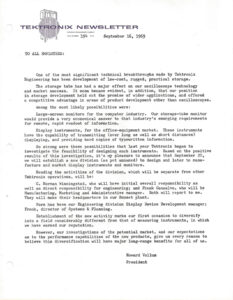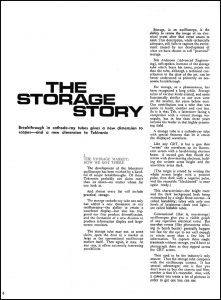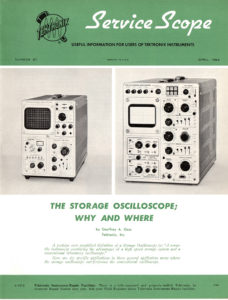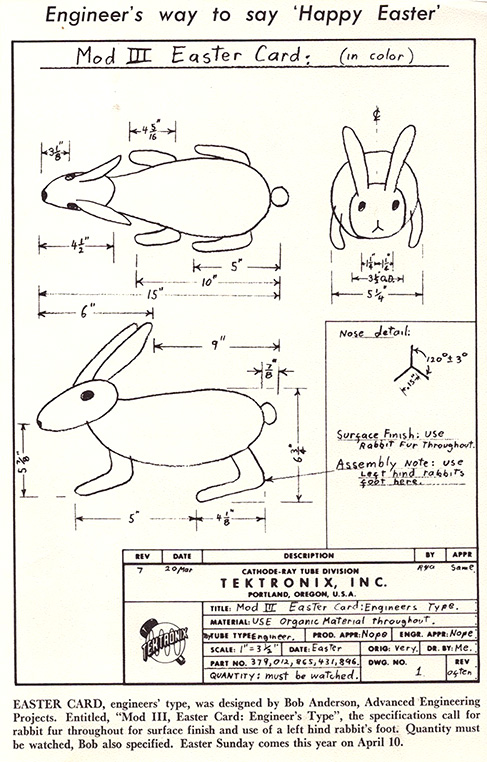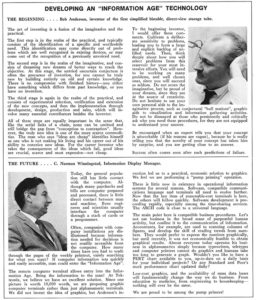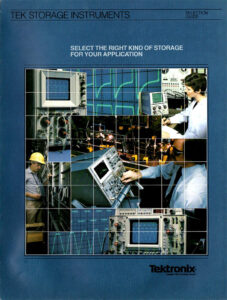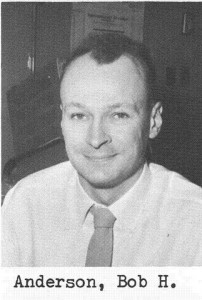 Bob Anderson is well known for his work developing the bistable storage tube at Tektronix. The storage CRT opened the door to a number of new market opportunities including computer graphics and information display.
Bob Anderson is well known for his work developing the bistable storage tube at Tektronix. The storage CRT opened the door to a number of new market opportunities including computer graphics and information display.
The storage CRT was developed by Dr Andrew Haeff working on the staff of the US Naval Research laboratory in 1947. His CRT was based on a writing gun, a flood gun, and a phosphor screen. In 1950 he joined Hughes Research and Development Laboratories to further development of the storage CRT.
Bob Anderson joined Tektronix in 1959 from Hughes where he worked in CRT manufacturing. The Hughes Memotron CRT was fragile and was expensive to build because of low yields. The Hughes Memo-Scope was likewise fragile, expensive, and poor performance. Bob was motivated from his observations at Hughes to try to come up with a better approach to storage CRTs. After his first project at Tektronix he asked his boss Dick Ropiequet to assign him to work on storage tube development.
Sometime in this same era, Bob worked on a virtual oscilloscope graticule to eliminate the parallax errors. This never went into production, but the museum has one of his prototypes. This vintageTEK video describes how it works.
This narrative by Orv Olson and Pete Perkins on the Tektronix CRT - A Look Back video describes Bob's invention.
This photo shows Bob's evolution of prototype tubes used in the development of the bistable storage CRT.
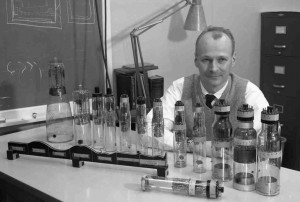
We have several of Bob's prototype storage tubes on display at the museum. Larger photos are on our 564 Storage CRT Development page.
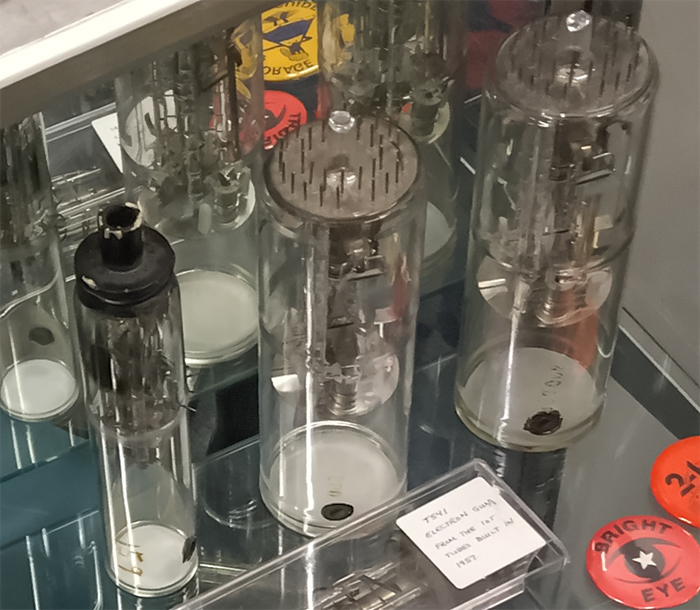
This photo shows John Mepham and Bob Anderson during the T5640 CRT development. John developed the decal method for phosphor deposition used on the 564 and many other storage and conventional tubes.
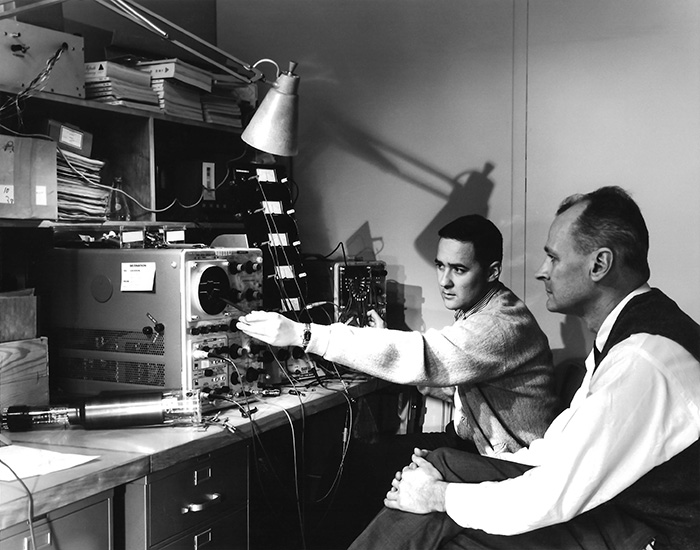
Bob's successful T5640 CRT led to the introduction of the Tektronix 564 storage scope in 1962 with impressive specifications offering 10 MHz, lower cost, and dual plug-ins for a wide range of capabilities. The 564 appeared on the cover of the September 10, 1965 Life Magazine.
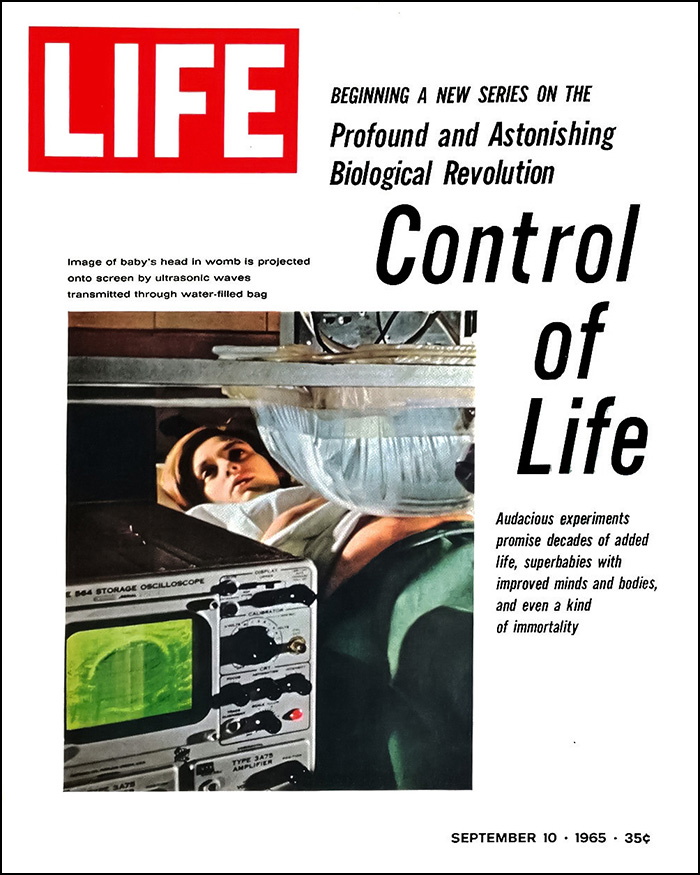
This September 16, 1965 Tektronix Newsletter from Howard Vollum talks about the importance of the storage tube and the announcement of an unnamed division to be headed up by Norm Winningstad. Click on the image to view the PDF.
This article about the development of the storage CRT appeared in the Spring 1966 issue of TekTalk. It is a tribute to the inventor Bob Anderson. Click on the image to view the PDF.
This April 1966 issue of ServiceScope also features an article on storage oscilloscopes. Click on the image to view the PDF.
This Spring 1967 TekTalk features an application that utilizes the split screen capability of the 564 in helping deaf children in forming sounds.
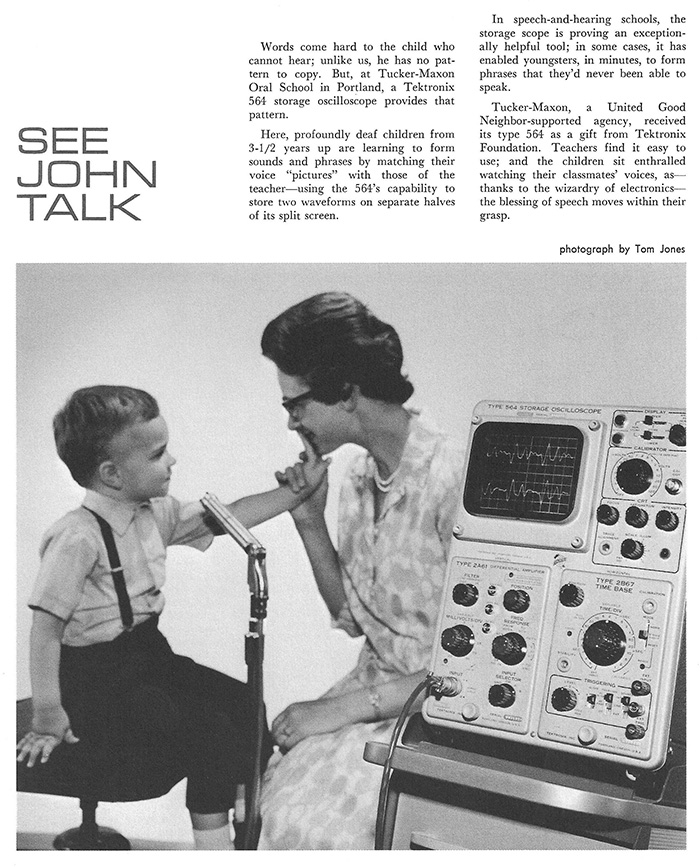
A nice reflection of Bob Anderson.
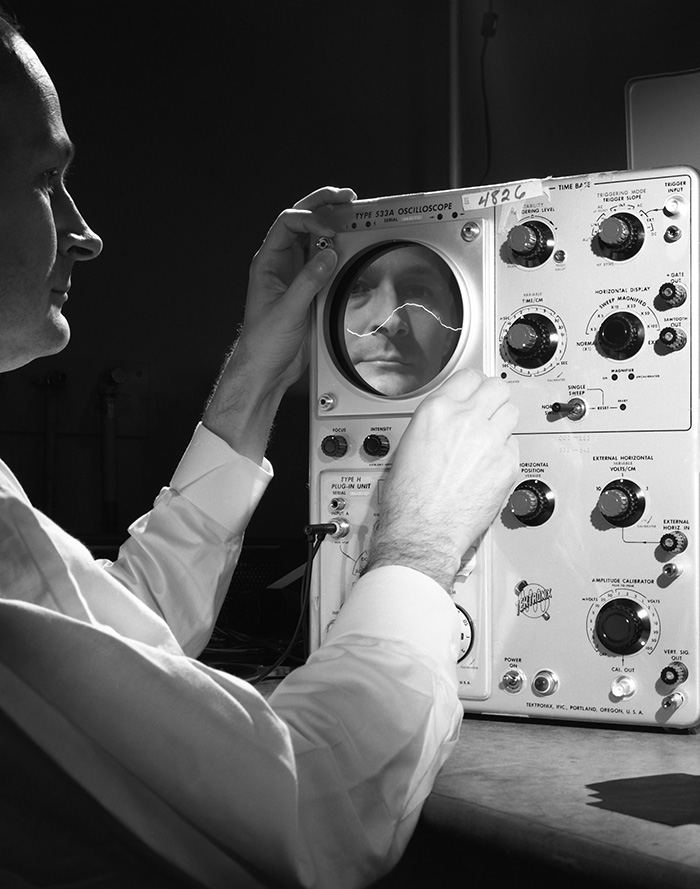
We have two 564s on display at the museum. One is a rack mounted oscilloscope for demonstrating storage and the other is used to demonstrate the Automatic .Programmable plug-ins.
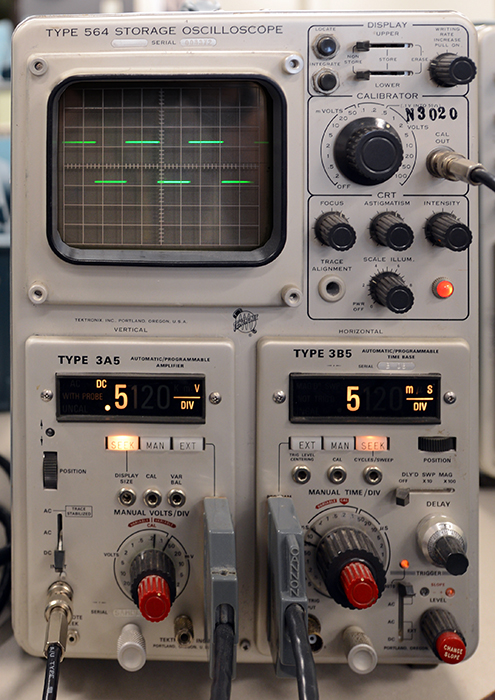
This Easter Card was drawn by Bob Anderson and the year is undated. Bob started in 1959 and the Tek Bug changed to a rectangular CRT in 1967 so this is likely in that range. Click on the image to view a higher resolution PDF.
The storage CRT also led to Tektronix's dominant position in computer displays in the 1970s and '80s.

More information on the DVST and computer graphics can be found on these pages:
This June 1969 TekScope features Bob's perspective on the stages of invention. Click on the image to view the PDF.
This February 19, 1981 Storage Scope Brochure demonstrates the impact of Bob's invention 20 years later. Click on the image to view the PDF.
In 2011 Bob Anderson was inducted into the Electronic Design Hall of Fame. They have a nice tribute to his development of the storage tube on the Electronic Design website. (External site)

